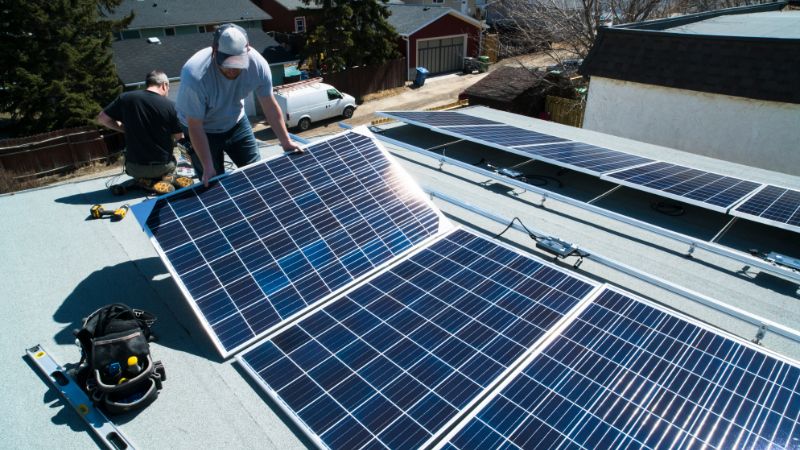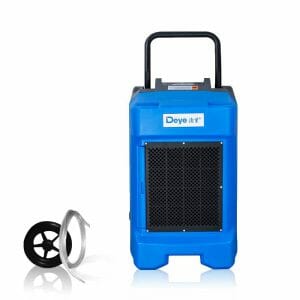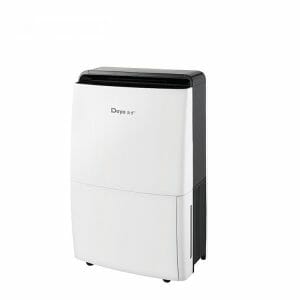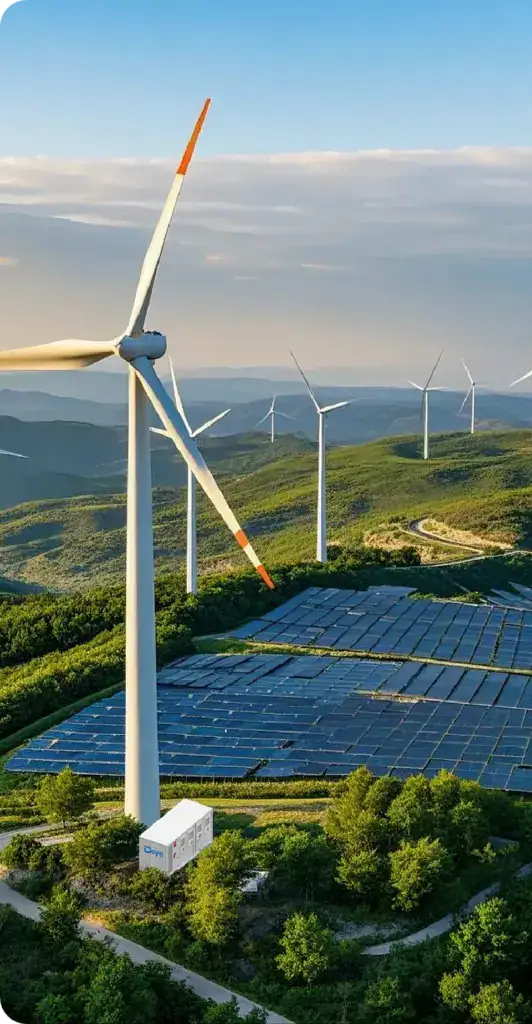When homeowners consider installing solar panels, they often wonder about potential noise issues. “Will my new solar panel system make a racket?”
The short answer is that solar panels themselves are virtually silent. However, the complete solar energy system does have components that can produce a small amount of sound. This guide will walk you through what makes noise, what doesn’t, and what to do if your system seems too loud.

Do Solar Panels Make Noise?
Solar panels themselves operate silently without moving parts, but some components in solar systems can produce minimal sounds during normal operation.
Understanding How Solar Panels Work
Solar panels convert sunlight into electricity through photovoltaic cells without any mechanical movement. The panels contain no motors, fans, or moving components that could generate noise.
Each panel consists of silicon cells that capture photons from sunlight. When photons hit the cells, they knock electrons loose, creating an electrical current. This process happens completely silently.
The panels remain stationary on rooftops or ground mounts throughout their operation. They require no vibration or rotation to function effectively. This design makes them one of the quietest energy generation methods available.
Key components of silent operation:
- Photovoltaic cells with no moving parts
- Static mounting systems
- No mechanical energy conversion required
Types of Noises Associated With Solar Panels
While panels themselves stay silent, other system components can produce sounds. Inverters represent the most common source of noise in solar installations.
String inverters typically emit a low humming or buzzing sound during daylight hours. This sound occurs as the inverter converts DC electricity from panels into AC electricity for home use.
Common noise sources include:
- Inverters: Low hum or buzz (typically 25-45 decibels)
- Cooling fans: Quiet whirring in some inverter models
- Tracking systems: Occasional motor sounds in utility-scale installations
Microinverters attached to individual panels generally produce less noise than centralized string inverters. Power optimizers create minimal sound since they work alongside string inverters.
Normal Operating Sounds
Most solar system sounds fall within acceptable noise levels for residential areas. Inverter humming typically measures between 25-45 decibels, comparable to a quiet library.
These sounds occur only during daylight hours when panels generate electricity. At night, solar systems remain completely silent since no electricity conversion takes place.
Typical sound levels:
| Component | Decibel Range | Comparison |
| String Inverter | 25-45 dB | Quiet library to soft conversation |
| Microinverter | 20-35 dB | Whisper to quiet library |
| Power Optimizer | 15-25 dB | Rustling leaves to whisper |
Properly installed systems position inverters away from bedrooms and quiet areas. Most homeowners find these operational sounds unnoticeable during daily activities.
Main Sources of Noise From Solar Panel Systems
While solar panels themselves operate silently, other components in the system can generate noise. Inverters produce electrical humming sounds, mounting hardware may create vibrations, and wind can cause rattling or whistling through gaps.
Inverters and Electrical Components
Inverters are the primary noise source in solar panel systems. They convert DC electricity from panels into AC electricity for home use, creating a low humming or buzzing sound during operation.
The noise level varies by inverter type and size. String inverters typically produce 40-50 decibels of sound, similar to a quiet library. Microinverters and power optimizers generate less noise since they’re smaller and distributed across the array.
Inverter noise is most noticeable during peak sunlight hours when electricity production is highest. The sound usually stops at night when panels aren’t generating power.
Common electrical component noises include:
- Low-frequency humming from transformers
- High-pitched whining from cooling fans
- Clicking sounds from disconnect switches
Proper inverter placement away from windows and living areas helps minimize noise impact. Quality inverters with better cooling systems tend to operate more quietly than budget models.
Mounting Structures and Racking
Poorly installed mounting systems can create various noise issues. Loose bolts, inadequate spacing, or improper attachment to roof structures often result in rattling or creaking sounds.
Key mounting-related noise sources:
- Loose hardware vibrating in wind
- Insufficient gaps between panels and roof
- Inadequate structural support causing flexing
- Metal expansion and contraction with temperature changes
Aluminum rails may expand and contract with temperature fluctuations, causing popping or clicking sounds. This thermal movement is normal but can be reduced with proper installation techniques.
Professional installers use appropriate fasteners and ensure secure connections to minimize these issues. Regular maintenance checks help identify loose components before they become problematic.

Wind and Vibrational Effects
Wind interacting with solar panels and mounting systems can generate several types of noise. Air flowing over panel surfaces or through gaps creates whistling or whooshing sounds.
Panels installed too close to roof surfaces may amplify wind noise. Inadequate spacing prevents proper airflow and can cause turbulence that produces unwanted sounds.
Wind-related noise factors:
- Panel height above roof surface
- Gap spacing between individual panels
- Edge sealing around the array perimeter
- Local wind patterns and building orientation
Vibrations from wind can transfer through mounting structures to the building itself. This structural transmission may amplify sounds inside the home, particularly in bedrooms or quiet spaces directly below the installation.
Proper installation with adequate spacing and secure mounting significantly reduces wind-related noise issues.
Comparing Solar Panel Noise to Other Household Sounds
Solar panels typically operate at noise levels below 40 decibels, making them quieter than most common household appliances and background sounds. Understanding these comparisons helps homeowners gauge the actual impact of solar installations on their daily living environment.
Noise Level Measurements
Solar panels themselves produce virtually no sound during operation. The panels generate electricity silently through photovoltaic conversion.
Any noise associated with solar systems typically comes from inverters, which operate between 25-45 decibels. This measurement places them among the quietest electrical devices in most homes.
Common Household Noise Levels:
- Refrigerator humming: 40-50 decibels
- Air conditioning unit: 50-60 decibels
- Dishwasher running: 55-70 decibels
- Solar inverter: 25-45 decibels
The inverter noise usually occurs only during daylight hours when the system actively converts DC power to AC power. Most quality inverters produce less sound than a typical home refrigerator.
Real-World Examples
Residents with solar installations report that inverter sounds blend into normal household background noise. The low hum resembles the sound of a small appliance running in another room.
During peak sunlight hours, a solar inverter produces noise comparable to:
- A quiet computer fan
- An electric toothbrush in use
- A small aquarium pump
Many homeowners never notice their solar system’s sound after installation. The noise level falls below typical ambient household sounds like HVAC systems, appliances, and outdoor traffic.
String inverters tend to be slightly louder than microinverters or power optimizers. However, even string inverters remain quieter than most standard home appliances.
Urban Versus Rural Environments
Urban environments naturally mask solar system sounds with ambient city noise. Traffic, air conditioning units, and neighbor activities create background sound levels that completely obscure solar inverter operation.
Rural properties experience lower ambient noise levels, making solar inverters slightly more noticeable. However, the sound remains minimal and non-disruptive to daily activities.
Environmental Sound Masking:
- Urban: Traffic noise (60-70 dB) easily masks inverter sounds
- Suburban: HVAC systems and lawn equipment provide sound cover
- Rural: Natural sounds like wind through trees often exceed inverter noise levels
Most rural residents find solar system sounds less intrusive than common farm equipment, generators, or well pumps. The consistent, low-level hum becomes part of the property’s normal sound profile within days of installation.
How to Minimize or Prevent Solar Panel Noise
Most solar panel noise issues can be prevented through proper installation techniques and regular system maintenance. Strategic placement and quality equipment selection also play crucial roles in maintaining quiet operation.
Professional Installation
Proper installation techniques form the foundation of a quiet solar panel system. Certified installers use secure mounting brackets that prevent panels from shifting or vibrating in wind conditions.
Professional installers ensure all mounting hardware is properly tightened to manufacturer specifications. Loose bolts or brackets can create creaking sounds as panels move slightly with temperature changes or wind.
Quality mounting systems include:
- Reinforced aluminum rails
- Stainless steel bolts
- Rubber gaskets for vibration dampening
- Proper spacing between panels
Inverter placement requires careful consideration during installation. Installers should position inverters away from bedrooms and living areas to minimize any humming sounds. Ground-mounted inverters can be placed further from the home than roof-mounted units.

Equipment Maintenance
Regular maintenance prevents most noise-related issues from developing over time. Homeowners should schedule annual inspections to check mounting hardware tightness and overall system condition.
Loose mounting brackets represent the most common cause of solar panel noise. A qualified technician can identify and tighten any hardware that has loosened due to thermal expansion or weather exposure.
Monthly maintenance tasks include:
- Visual inspection of mounting brackets
- Checking for damaged wiring
- Listening for unusual inverter sounds
- Cleaning debris from panel edges
Inverter maintenance involves checking for unusual humming or buzzing sounds that may indicate internal component issues. Most quality inverters operate with minimal noise, so significant sound changes warrant professional inspection.
Choosing the Right Location
Strategic placement decisions during the planning phase can eliminate potential noise concerns before installation begins. Ground-mounted systems offer more flexibility for positioning equipment away from living spaces.
Inverters should be located at least 10 feet from bedroom windows when possible. Utility rooms, garages, or exterior walls facing away from neighbors provide ideal inverter locations.
Landscaping solutions can further reduce any system sounds:
- Dense shrubs around ground-mounted equipment
- Trees as natural sound barriers
- Strategic fencing placement
Wind exposure affects panel noise levels significantly. Installers should consider prevailing wind patterns and potential turbulence from nearby structures when designing system layouts.
Addressing Common Concerns and Misconceptions
Many homeowners worry about solar panels creating noise during nighttime hours or contributing to neighborhood noise pollution. These concerns stem from misunderstandings about how solar technology actually operates.
Solar Panels and Nighttime Noise
Solar panels produce zero noise at night because they contain no moving parts and generate no electricity without sunlight. The photovoltaic cells remain completely inactive during dark hours.
Unlike wind turbines or generators, solar panels have no mechanical components that could create sound. They simply sit silently on rooftops throughout the night.
Common nighttime worries include:
- Electrical humming sounds
- Thermal expansion noises
- Inverter operation sounds
Most inverters automatically shut down at night when panels stop producing power. Any perceived nighttime sounds likely come from other sources like HVAC systems or neighborhood activity.
Temperature changes may cause minimal thermal expansion in mounting hardware, but this creates no audible noise. The panels themselves remain completely silent regardless of weather conditions.
Myths About Solar Panel Noise Pollution
The belief that solar panels contribute to noise pollution is completely unfounded. Solar installations operate in complete silence and cannot disturb neighbors or wildlife.
- Solar farms create industrial noise
- Panels vibrate in wind
- Electrical components buzz constantly
Large solar installations produce the same amount of noise as empty fields. No mechanical operation occurs within the panels themselves.
Wind cannot cause solar panels to vibrate audibly when properly installed. Modern mounting systems secure panels firmly to prevent any movement that could generate sound.
Electrical inverters may produce minimal humming during peak sunlight hours, but this sound rarely exceeds normal household appliance levels. Most residential inverters operate quieter than refrigerators or air conditioning units.








